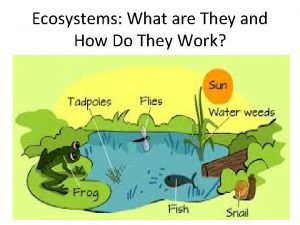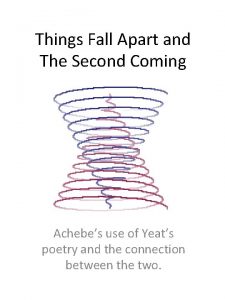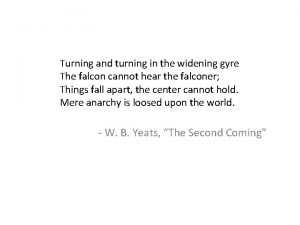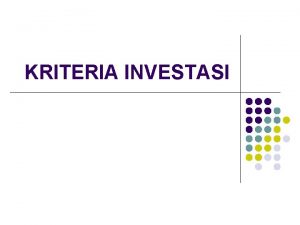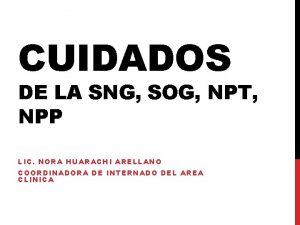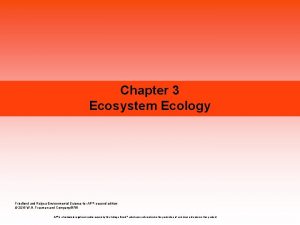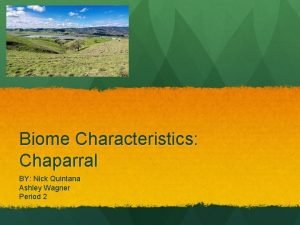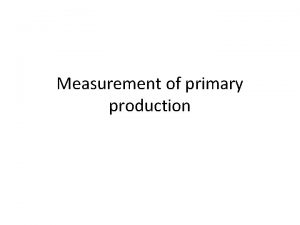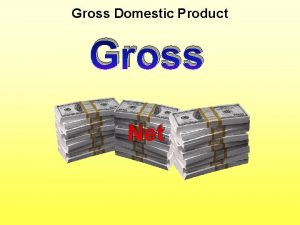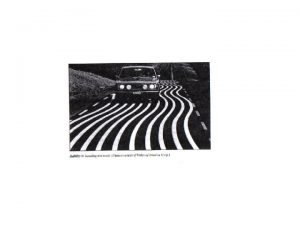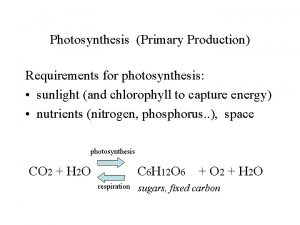GPP vs NPP Gross Primary Production Turning sunlight












- Slides: 12

GPP vs. NPP

Gross Primary Production: Turning sunlight into chemical energy

Ecological Productivity is the rate at which producers create organic molecules (food) and biomass (plant and animal bodies) from sunlight, CO 2, and water.

Productivity of Producers: The Rate Is Crucial Ø Gross primary production (GPP) l The total amount of solar energy captured by producers and converted into chemical energy and biomass.

Gross primary productivity (grams of carbon per square meter) Fig. 3 -20, p. 66

ECOLOGICAL PRODUCTIVITY Gross Primary Productivity GPP Total amount of energy obtained by an ecosystem. The Production of Biochemicals - Respiratory needs of organisms = Net Primary Productivity ENERGY LOSS NPP All organisms must use energy to stay alive. 90% Heat Loss The amount of chemical energy stored in plant biomass and available to consumers as a source of food. Organic Matter

Net Primary Productivity is represented by the bodies of organisms that are available as a source of food for the next trophic level.

Heat Tertiary consumers (human) Heat Decomposers Heat 10 Secondary consumers (perch) Heat 100 1, 000 Primary consumers (zooplankton) Heat 10, 000 Producers Usable energy (phytoplankton) Available at Each tropic level (in kilocalories) Fig. 3 -19, p. 66

Ø What are nature’s three most productive and three least productive systems? Figure 3 -22

Terrestrial Ecosystems Swamps and marshes Tropical rain forest Temperate forest North. coniferous forest Savanna Agricultural land Woodland shrubland Temperate grassland Tundra (arctic and alpine) Desert scrub Extreme desert Aquatic Ecosystems Estuaries Lakes and streams Continental shelf Open ocean Average net primary productivity (kcal/m 2 /yr) Fig. 3 -22, p. 67

The End


